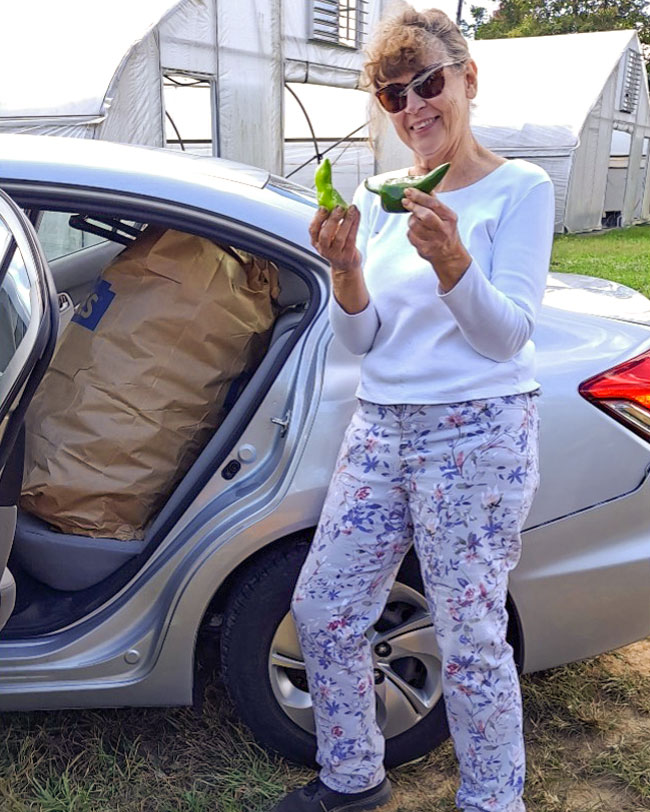Blog
Meet a Gleaner!

A story by Connie O'Connor. This article is also featured in the March 3, 2023, issue of The Ripple.
Click here to learn more and subscribe to this monthly e-newsletter!
Lisa Arnett knows that food waste is both an environmental and a humanitarian issue. She writes, “Since I retired in September, I have been working with the Society of St. Andrew to glean unharvested produce from local farms for distribution to food banks. My proudest moment was helping to harvest 1,100 pounds of peppers from a New Richmond farm! I thought this cause might be of interest to other CNC members. I hope you will agree.”
From Kroger ads to advice in the Ripple newsletter, we hear a lot about food waste. While buying only the food you can use and composting leftovers are great steps, did you realize that 30% of global food loss occurs at the agricultural production and harvest stages? Strict cosmetic specifications from buyers (no spots on my apples!) and the high cost to growers to return to the fields leave tons of nutritious food unavailable to those who need it. Not only is the food wasted but all the resources (water, energy, fertilizer, manpower) are also wasted. This is an appalling situation but don't despair!
Right here in Cincinnati, The Society of St. Andrew (SoSA) uses volunteers to go to farms in the region (Clermont County, Butler County, Boone County, Ky., and southern Indiana) to “glean” or gather leftover produce that is then delivered to local food banks. In 2022, Ohio gleaners have gathered 429,000 pounds of food that would otherwise have gone to waste. Local gleaners have harvested apples, tomatoes, potatoes, peppers, broccoli, and turnips to feed our hungry neighbors. (See attached picture of me with a carload of the 1100 pounds of peppers we gleaned from a New Richmond farm.)
Gleaners are just average folks who don’t mind getting their hands dirty to help their neighbors and the environment. Gleaning has opened my eyes to the heroism of farmers whose livelihood is dependent on so many factors out of their control and the hard work it takes to bring food to our tables. The busiest months for gleaning are July through November. However even in the “off-season” there are opportunities such as transporting bread from bakeries, gathering food from farmers’ markets, or hosting “simple suppers” to educate others. If you would like to help end food waste and hunger in our area, check out the endhunger.org/ohio website for more information.